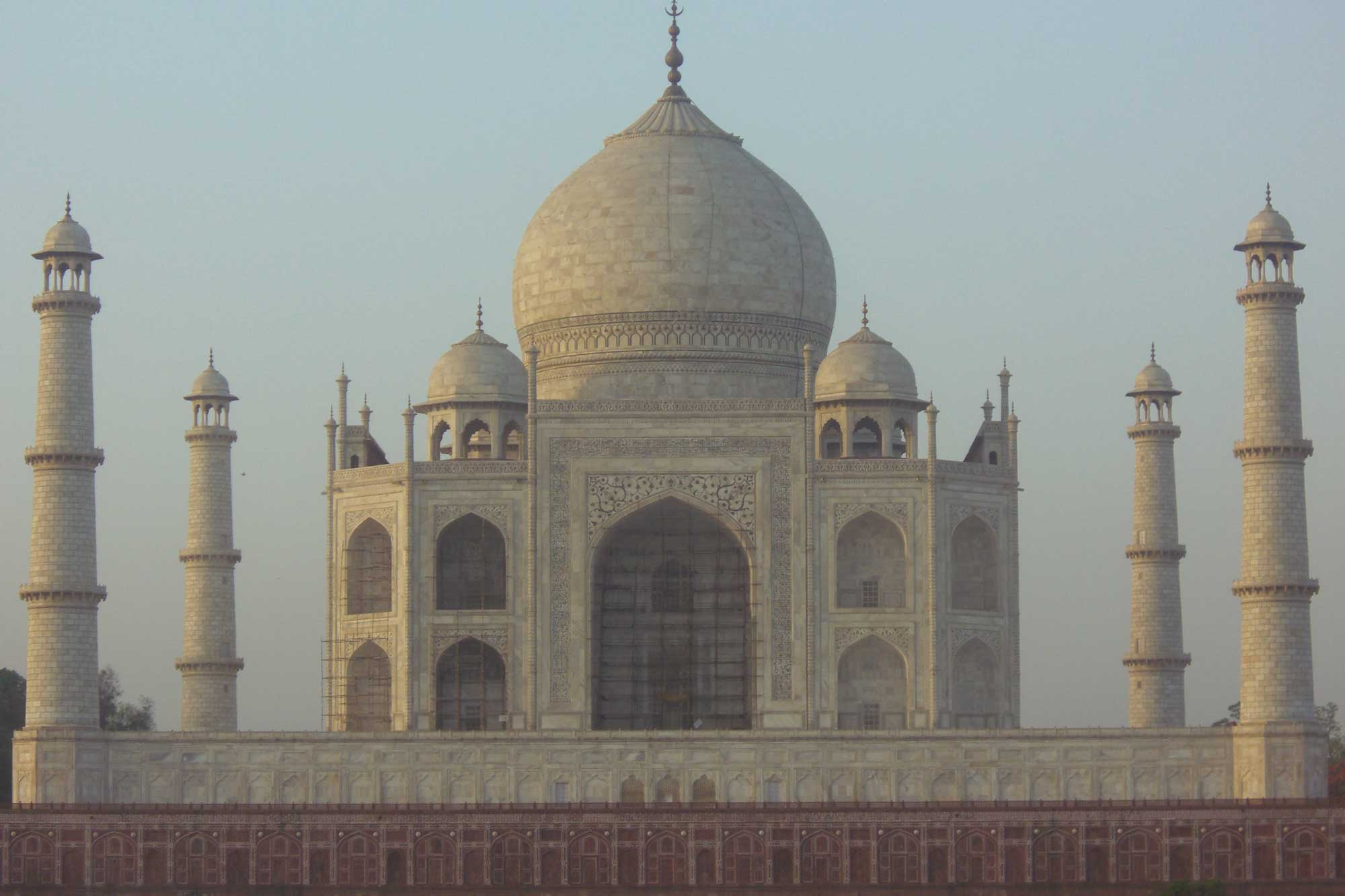Agra Fort
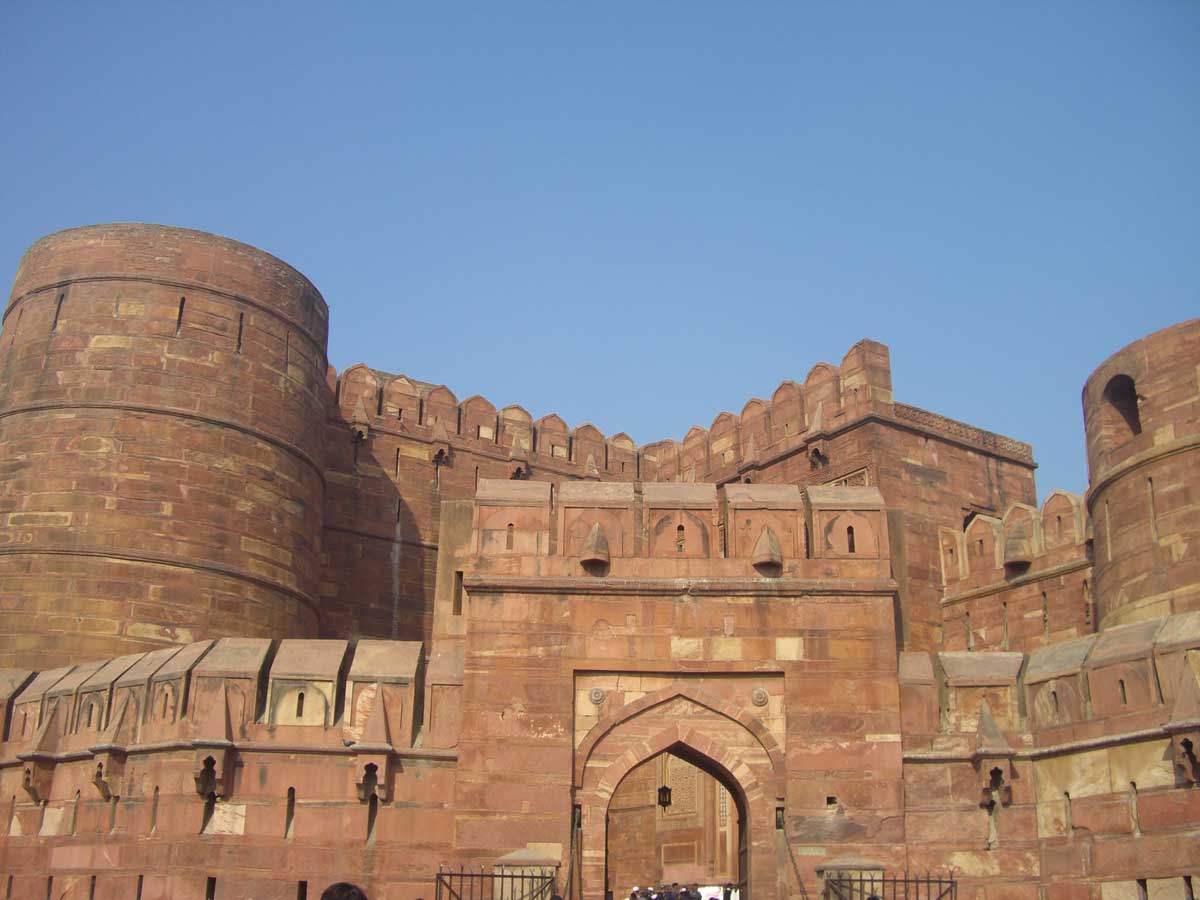
Agra fort is the most important
fort of India. The great Mughals: Babar, Humayun, Akbar, Jahangir, Shah Jahan
and Aurangzeb lived here, and the country was governed from here. It contained
the largest state treasury and mint. It was visited by foreign ambassadors,
travellers and the highest dignitaries who participated in the making of
medieval history of India. No other fort of India had this honour.
Agra fort stands on an ancient
site just by the river Yamuna. It was a brick fort and Chauhan Rajputs held it.
It is mentioned for the first time in 1080 A.D. when a Ghaznavide force
captured it. Sikandar Lodi (1487-1517) was the first Sultan of Delhi who
shifted to Agra and lived in the fort. He governed the country form here and
Agra assumed the prominence of a second capital. He died in the fort in 1517
and his son Ibrahim Lodi held it for 9 years until he was defeated and killed
at Panipat in 1526. Several palaces, wells and a mosque were built in the fort
during the Lodi period.
After Panipat, Mughals captured
Agra fort and a vast treasure - which included the diamond named ‘Koh-I-Noor’ –
was seized. Babur stayed in the fort in the palace of Ibrahim. He built baoli
(step-well) in it. Humayun was coronated here in 1530. After his defeat at
Chausa in 1539, he returned to Agra. Nizam water-carrier (Saqqa), who had saved
Humayun from drowning, was crowned here for half-a-day and he issued a menial
currency. Humayun was defeated at Bilgram in 1540. Sher Shah held it for five
years. The Mughals defeated the Afghans finally at Panipat in 1556.
Realizing the importance of its
central situation, Akbar (1556-1605) decided to make Agra his capital. He
arrived here in 1558. His historian Abul Fazal recorded that this was a brick
fort, known as ‘Badalgarh’. It was in ruined condition and Akbar ordered it to
be rebuilt with red sandstone. Its foundations were laid by expert architects
and it was massively built with bricks in inner core and stone on external
surfaces. Some 4000 builders daily worked on it and it was completed in 8 years
(1565-1573).
The fort has a semicircular plan,
its chord lying parallel to the river. Its walls are 70 feet high. Double
ramparts have massive circular bastions at regular intervals, battlements,
embrasures, machicolations and string-courses. Four gates were provided on its
four sides. ‘Khizri-Gate’ opening on the river, facing series of ghats (quays),
was also built.
Abul Fazal recorded that 500
buildings in the beautiful designs of Bengal and Gujarat were built in it. Some
of these were demolished by Shah Jehan to make room for his white marble
palaces. But they were mostly destroyed by the British between 1803 and 1862,
for raising barracks. Hardly 30 buildings have survived on the South-Eastern
side, facing the river. Of these, the Delhi-Gate and Akbar-Gate and one palace;
‘Bengali-Mahal’, are representative Akbar buildings. The Delhi-Gate faces the
city. A draw-bridge and crooked entrance made it impregnable. Two life-size
stone elephants, with their riders, were placed on its inner gate which was
called ‘Hathi-Pol’. The Delhi-Gate was monumentally built as the king’s formal
gate. ‘Akbar-Gate’ was renamed ‘Amar Singh Gate’ by the British. This gate is
similar to the Delhi-Gate. Both are built of red stone. The Bengali-Mahal is
also built of red stone and is now split into ‘Akbar-Mahal’ and
‘Jahangir-Mahal’.
Akbar died and Jahangir was
coronated in the fort in 1605. The latter mostly resided in Lahore and Kashmir,
though he visited Agra regularly and lived in the fort. Agra continued to be
the capital of the Mughal Empire. Shah Jahan was also crowned in the fort in
1628. He was a great builder and its white marble palaces belong to him. He
built three marble mosques in it, Moti-Masjid, Nagina-Masjid and Mina-Masjid.
After the battle of Samogarh in 1658,
Aurangzeb besieged the fort and stopped its water supply from the river. Shah
Jahan could not drink the well water and surrendered. Aurangzeb imprisoned him,
his own father, in the fort where he lived as a prisoner for 8 years. He died
in it and was buried in the Taj Mahal. The barbicans around the two gates and
on the river-side were built by Aurangzeb to strengthen its defences.
Though Shah Jahan had transferred
his capital to Delhi, formally in 1638, he continued to live here. But after
his death, Agra lost its grandeur; Aurangzeb remained busy in the Deccan
conflict. Yet, time and again, he lived here and held the durbar. Shivaji came
to Agra in 1666 and met Aurangzeb in Diwan-I-Khas. He was betrayed and
imprisoned, though the wily Matatha ultimately escaped. Aurangzeb’s death in
1707 threw the affairs of the Mughal Empire to chaos. The 18th
century history of the Agra Fort is a saga of sieges and plunder. It was held
by Jats and Marathas. British captured it from the Marathas in 1803. They
garrisoned it and converted it into an arsenal.
The Mughal palaces have remained
in a small, South-Eastern portion of the fort. Agra Fort is a UNESCO world
heritage site.

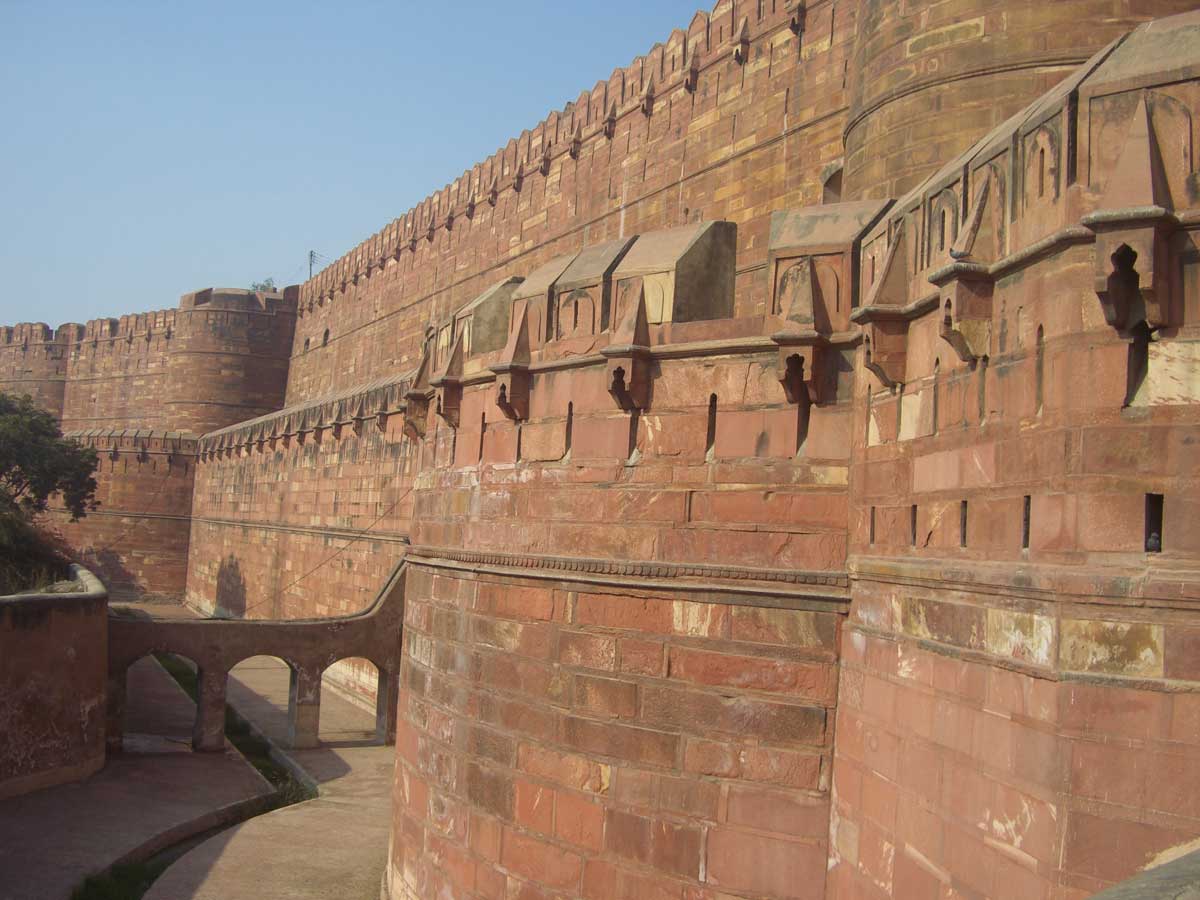
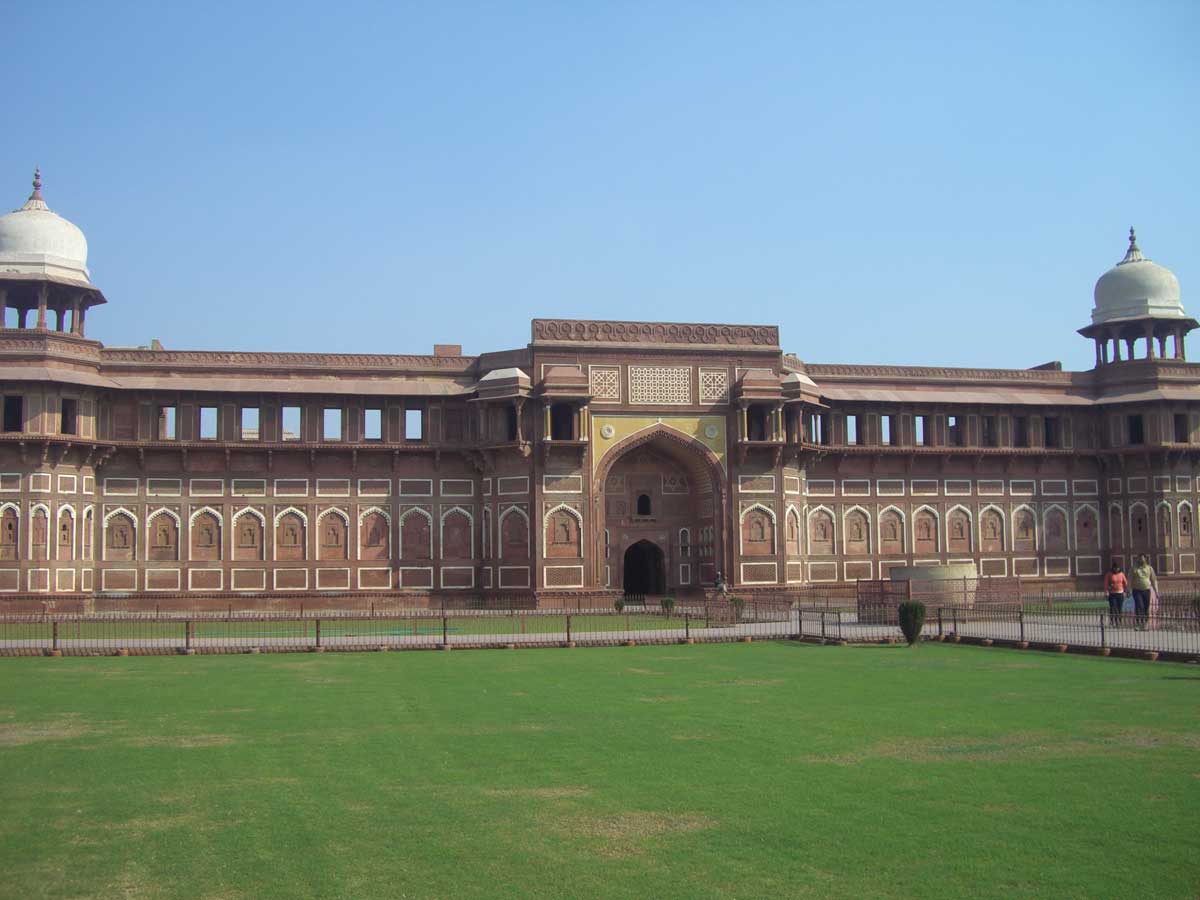
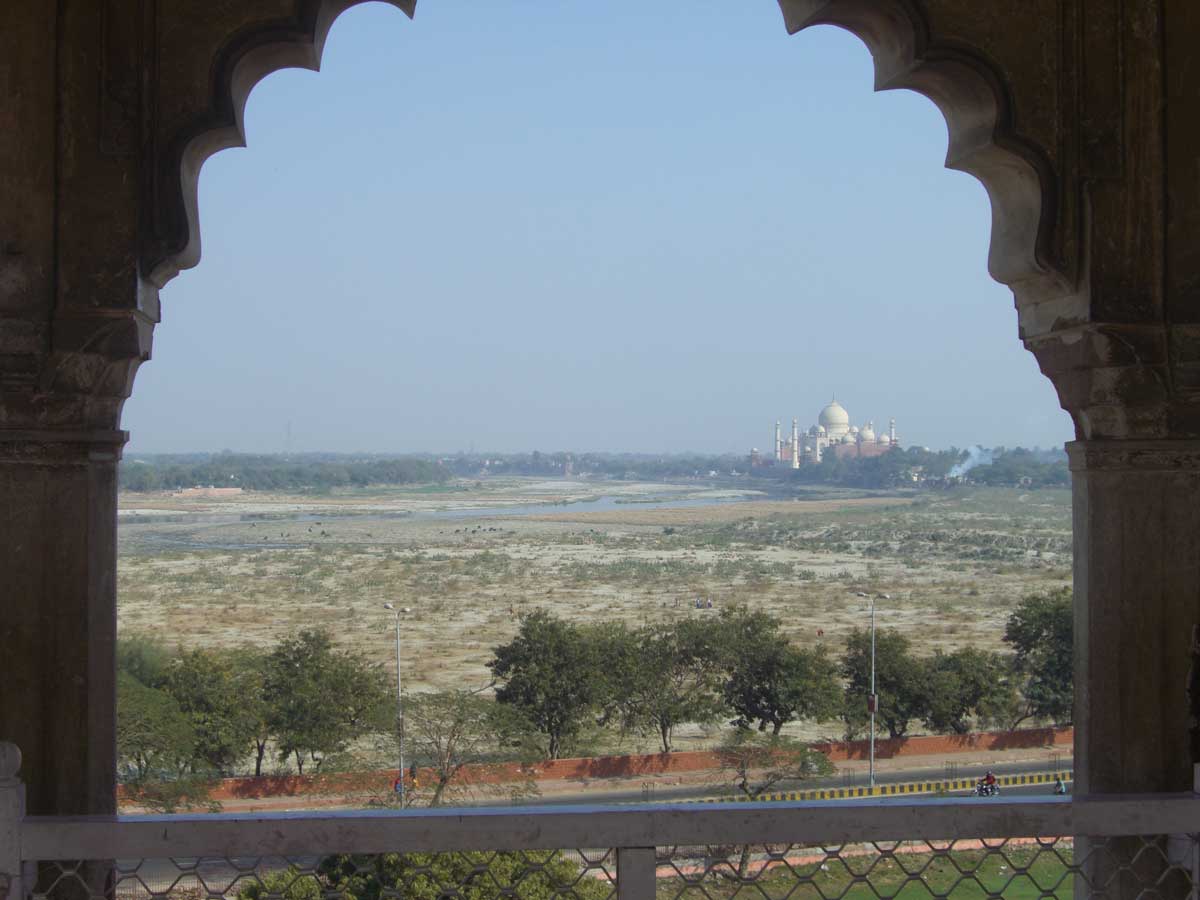
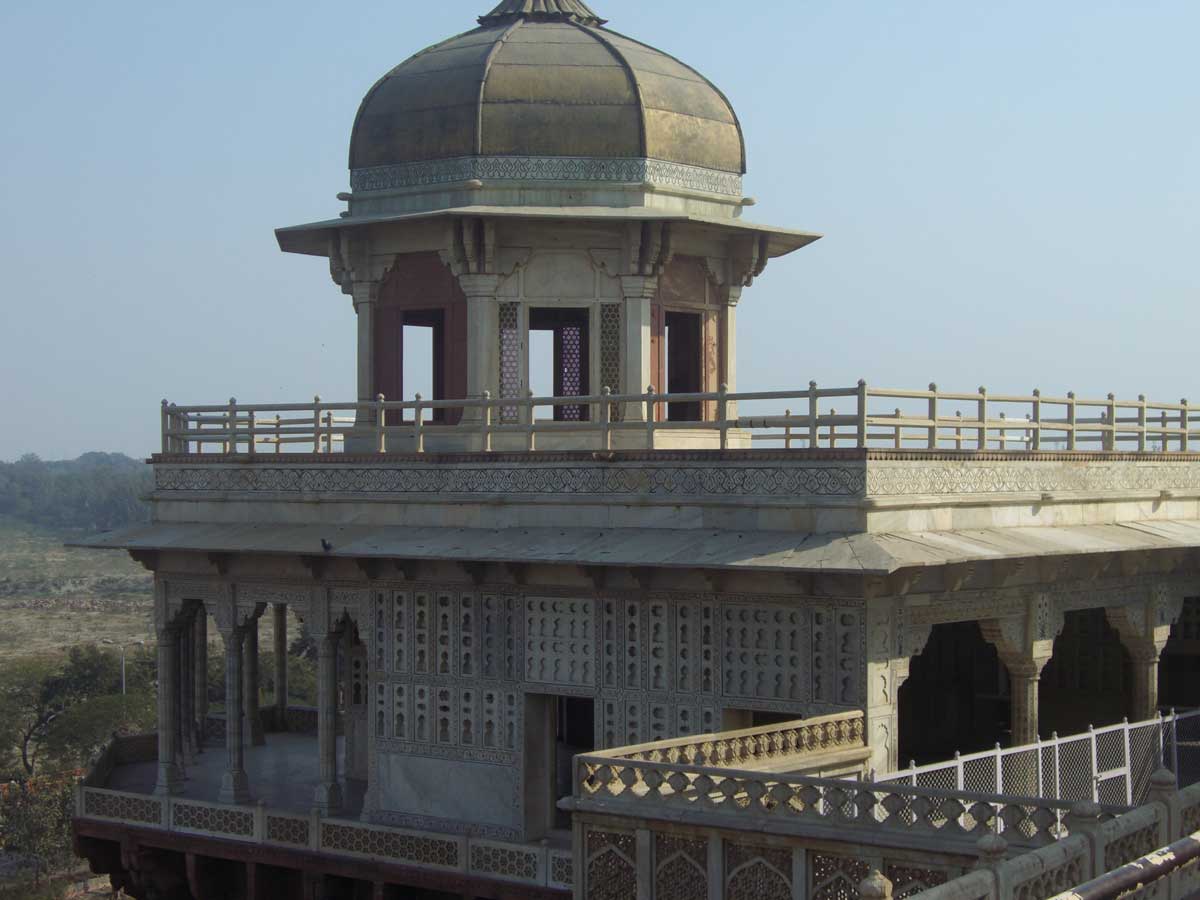
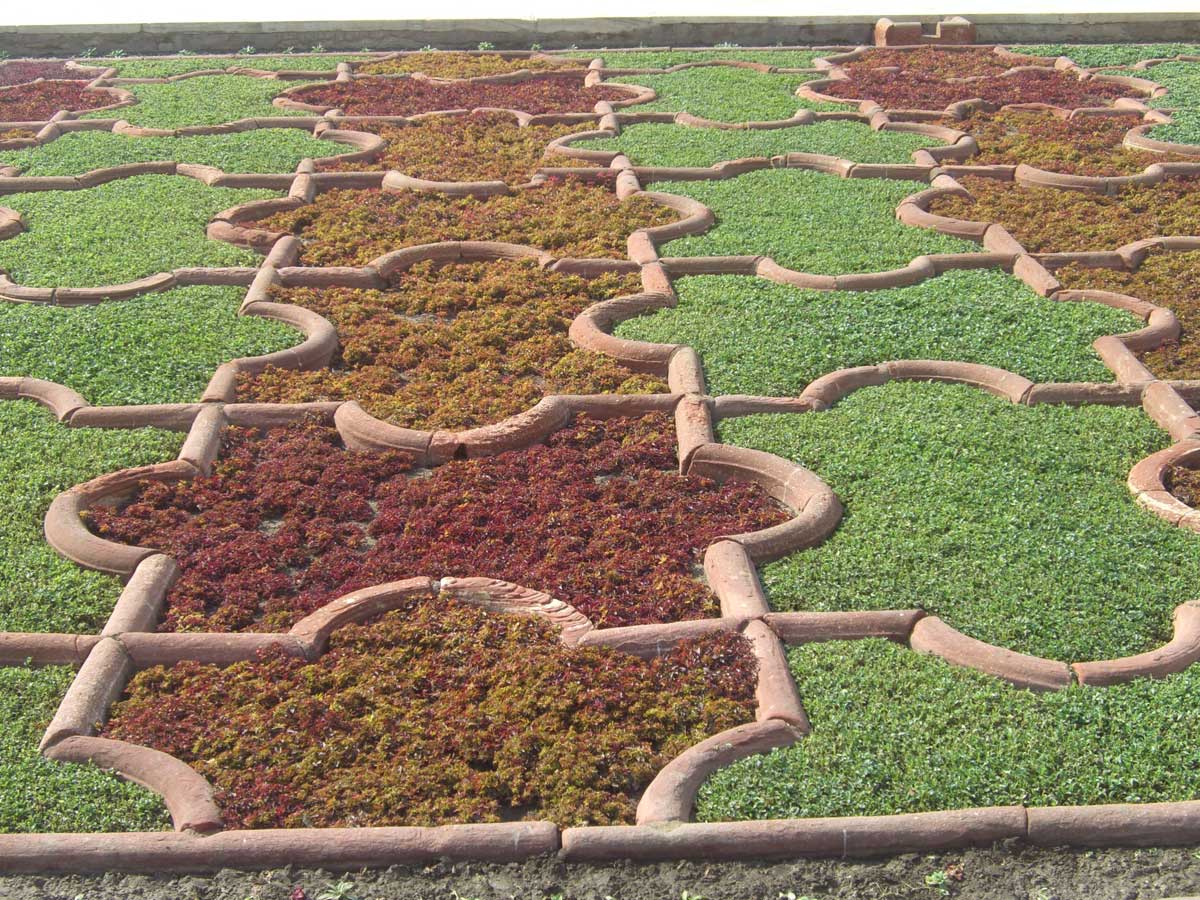
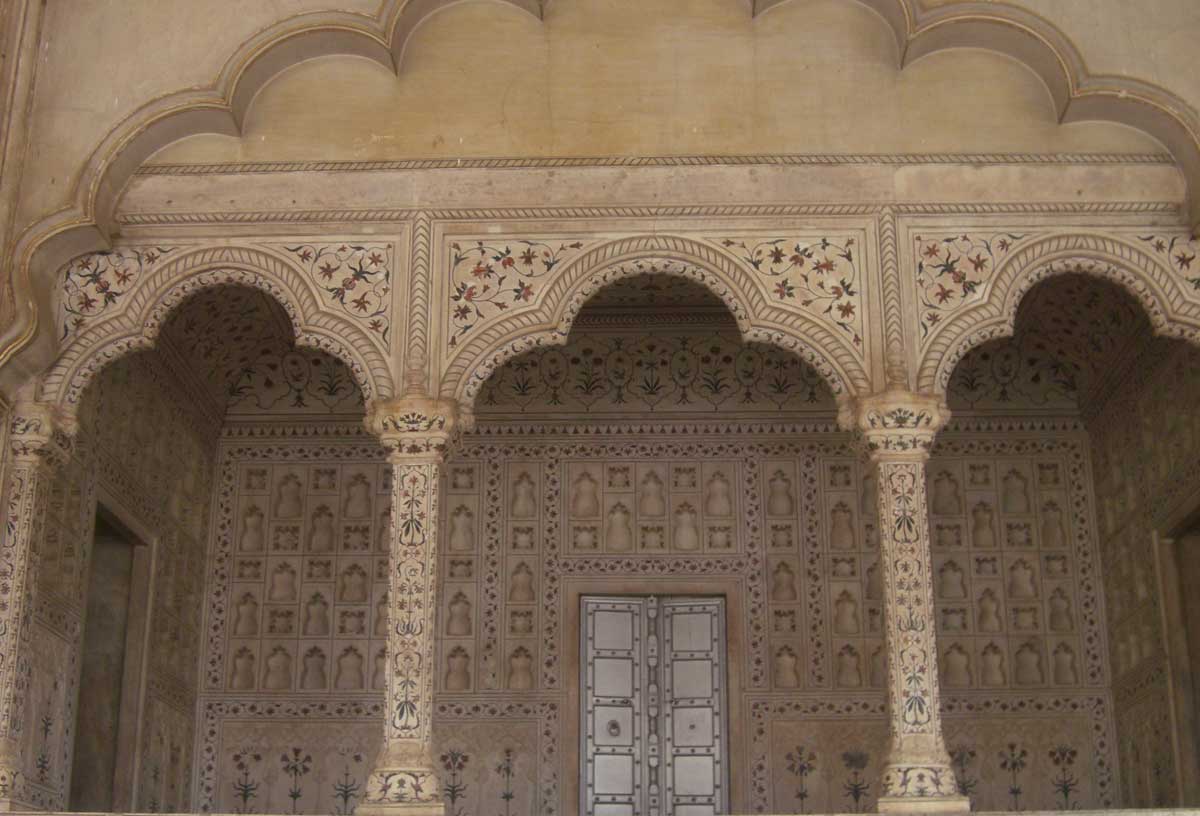
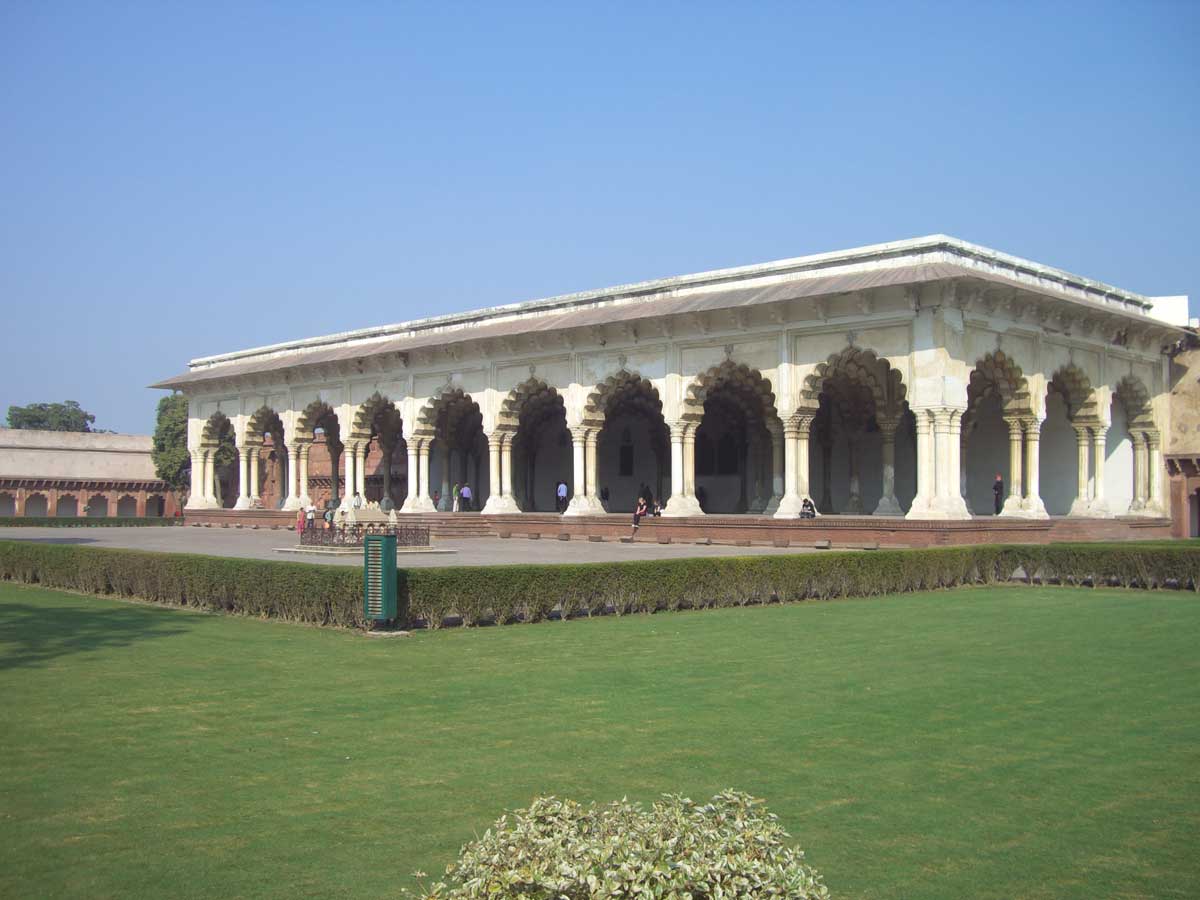
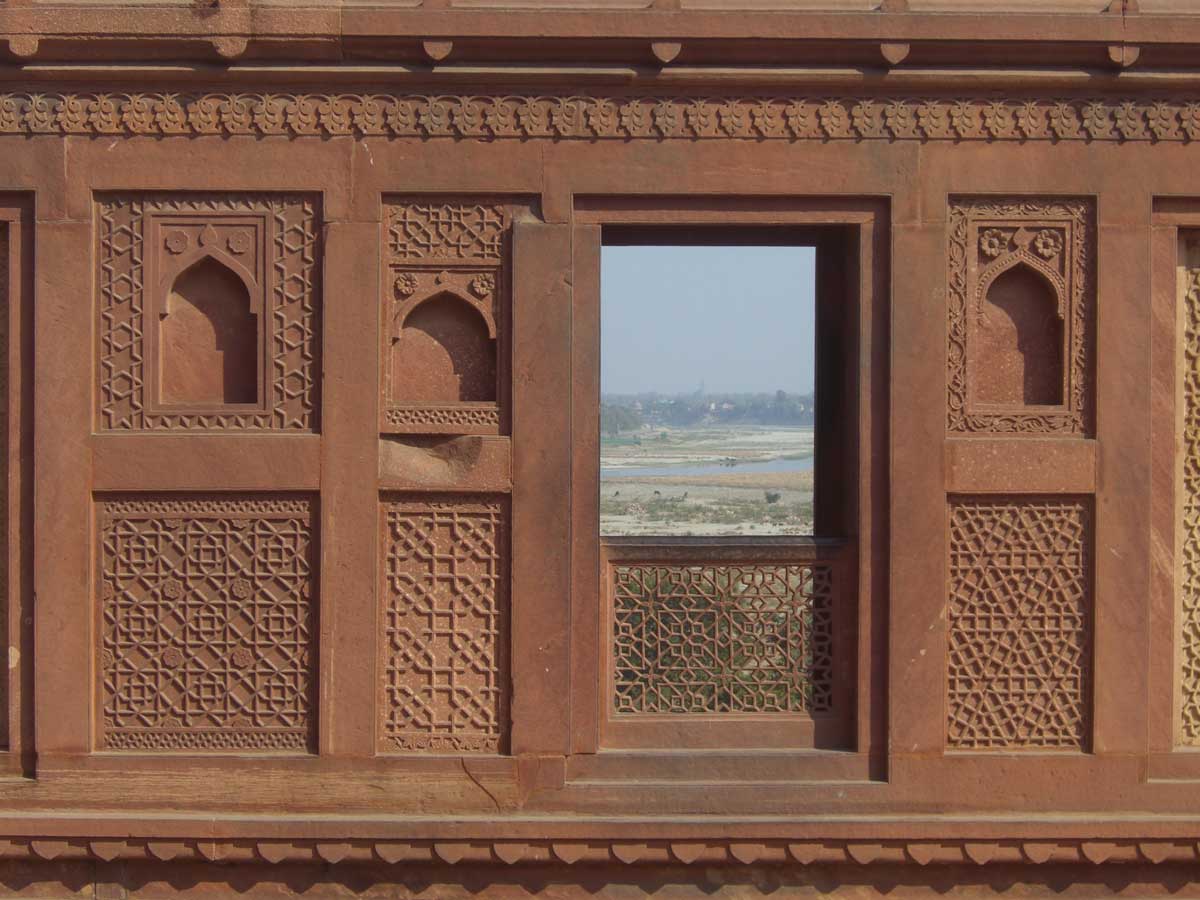
View of the Taj Mahal from the Agra Fort
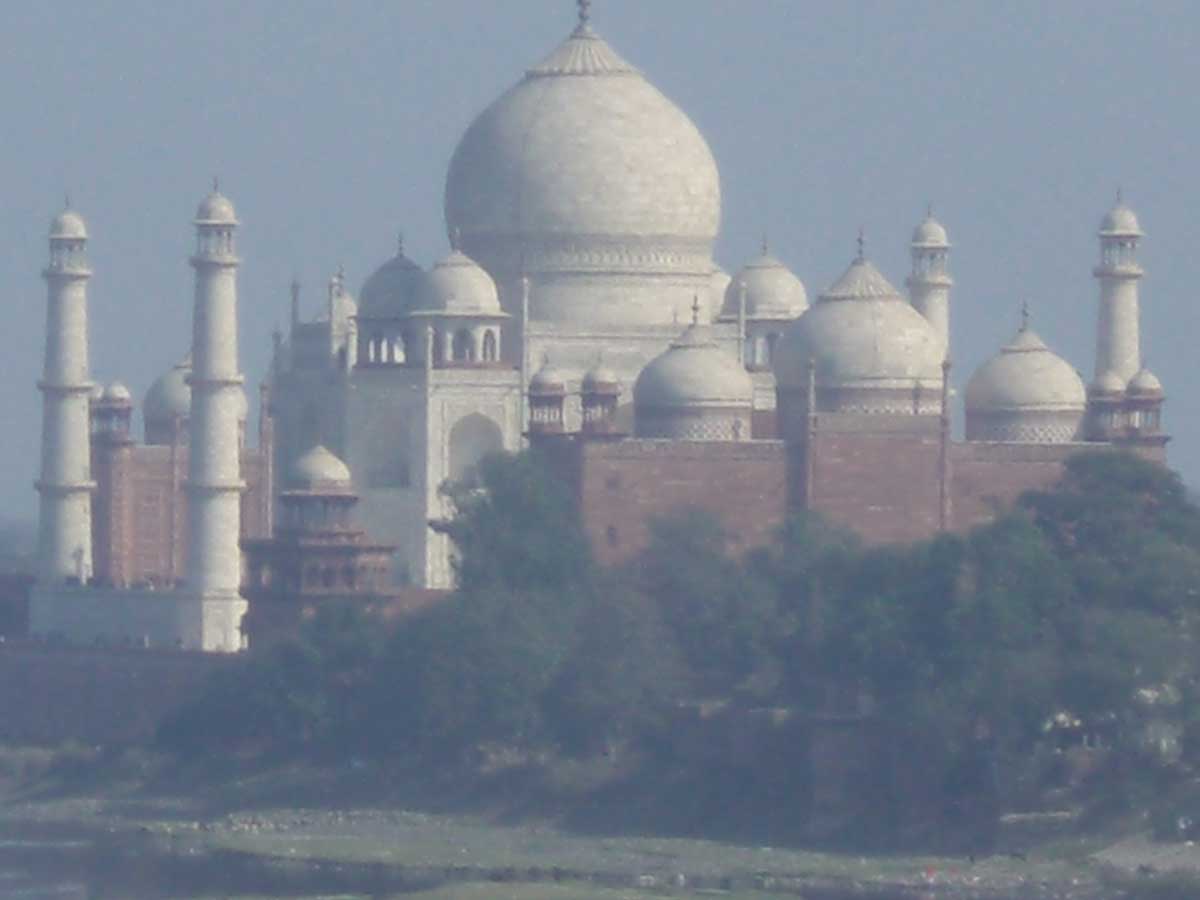
Taj Mahal
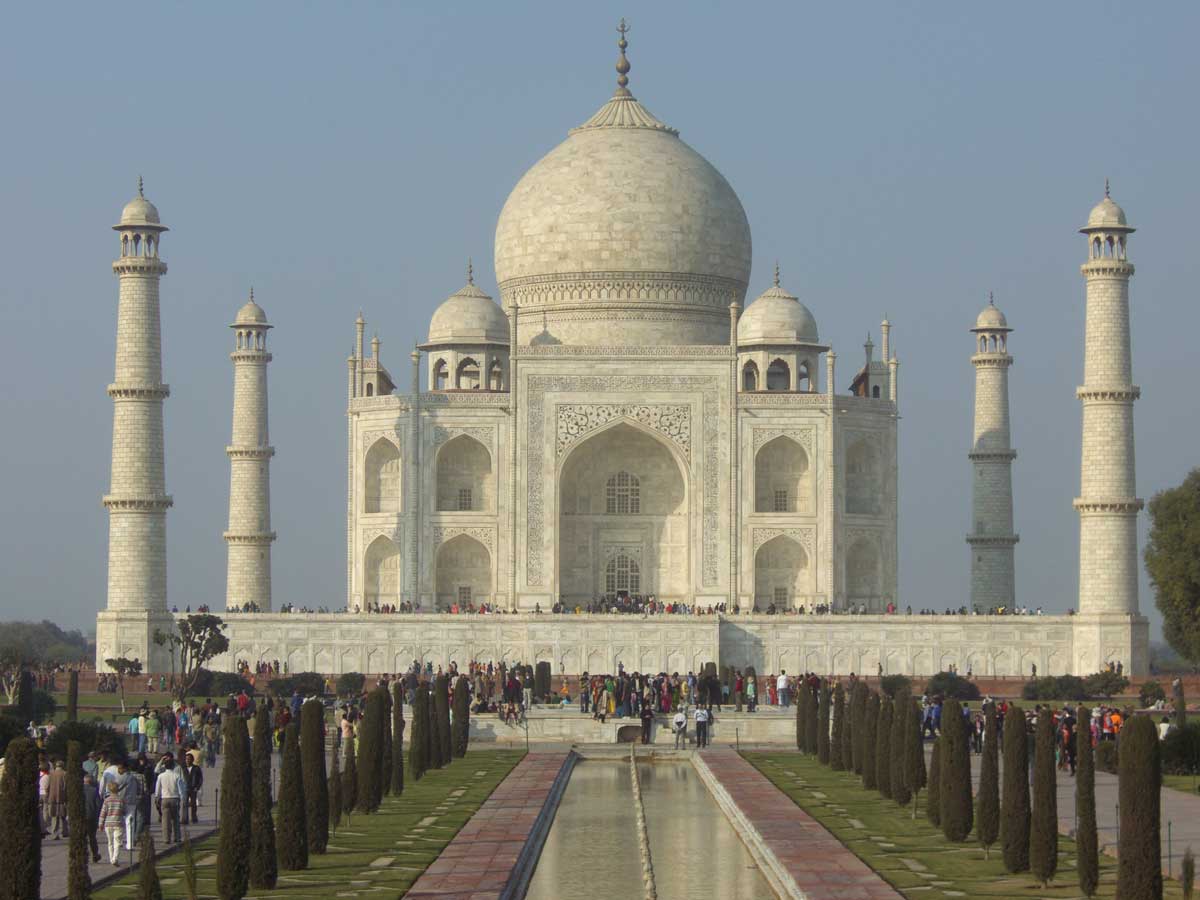
Taj view from left bank of Yamuna
